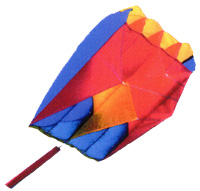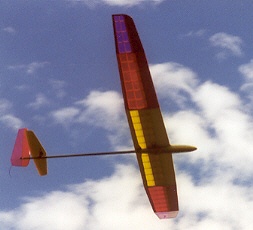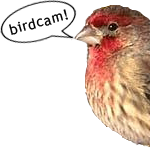
The late 1970s were an interesting time for alternative methods of flight. The day before I was born, August 17th, 1978, the first trans-Atlantic flight by balloon was completed. One year earlier in 1977, Paul MacCready had won the Kremer Prize by creating the first-ever human-powered airplane, the Gossamer Condor.
Two years later in 1979, MacCready would make aeronautical history with the Gossamer Albatross by crossing the English Channel. The achievement was substantial, but not in the same direction as previous achievements of “bigger, higher, faster”, but “lighter, more efficient, stronger”. MacCready studied the flight of birds and was himself a sailplane champion, and this informed his designs. In an age of fighter jets and big airliners, he showed that flight could still be a very personal achievement.
NPR Obituary w/ pilot of the Gossamer Albatross
Paul B. MacCready @ Wikipedia
Excellent short bio @ MIT, with video
¨

That question is answered by Dr. Charles Dillon of the League of Science in the Monkey Interest.

The monkey in question is Slingshot Monkey, a wonderful contraption with surgical tubing for arms that you fire from your fingers. No monkeys were harmed in this experiment. (He had a tinfoil helmet). The speed was measured by a HotWheels Radar Gun, which are currently $15 at your local, neighborhood Target. Gonna use it one some of my soaring machines as well, I think – I might take it apart and modify it for range.
Oh, and the answer to today’s question is 12 MPH. (Monkeymiles per Hour)
Side fact: Banannon is the chemical ingredient that makes bananas taste like bananas.
¨

Listening to a song just now from the great compilation I am the Resurrection – A Tribute to John Fahey, I was thinking that I’d really, really like to hear more music like what I heard in that song. But where do I start? How do I describe that music? How would I search teh intarwebs to find such things? If I put “acoustic jangly music” into Google, I doubt I’d get what I’m looking for. Further, I wondered what it’d be like to search for images with only basic cues, like “cat fuzzy” and be presented with images specifically of fuzzy cats and nothing more.
What I’m looking for is a more abstract search – which I think is something that humans do every day in their minds. The equivalent of asking the video-store clerk “You know that movie with that guy with that shiny thing on his head,” or like what Kelly refers to as “fall music” – music that somehow evokes the feelings of the season that is “fall”. Obviously this isn’t something that you can easily divine from a filename, and even the search terms like “fall music” mean different things to different people, so it’s a tough challenge.
As you might imagine, Google’s already pushing things in this direction. In a small step to make their image search better (it’s already fairly awesome), they introduced the Google Image Labeler a while back. It puts you head-to-head with someone else to help “tag” the images with words of what you see in the photo. If you see a cat in the image, you can put in the word “cat”. Your description doesn’t get accepted unless the anonymous person on the other end puts in the same word, thereby ensuring some level of quality.
The problem is that humans are intelligent, but not quite intelligent enough to transfer equivalent intelligence into machines. This is a whole branch of science, as you might imagine, and we are certainly pushing things forward every day. It’s only a matter of plumbing the depths of our own minds and learning just how we learn.
The mind, it boggles.
¨

This Thursday, Kelly and I are headed for vacation, bookended by me competing at the Academy of Model Aeronautics Soaring Nationals in Muncie, Indian, better known by it’s competitors as just the NATS. You may remember that last year I went to my first NATS and I managed to do pretty well. Hopefully, I can repeat that performance this year, but in all reality I’m just there to have fun.
The Soaring NATS is actually a number of different events packed into a week-long span. This year, I’m flying handlaunch, Unlimited and RES. Handlaunch being planes under 60″ launched by hand, Unlimited being winch-launched planes of any size, and RES being rudder/elevator/spoiler only planes. Handlaunch competition is on Friday, July 21st, and my next event, Unlimited, doesn’t start until the 26th, so Kelly and I have plans to go up to Detroit and kick around there for a little while. We are going to hit a Detroit Tigers game and go to the Henry Ford Museum as well. Not to mention that Kelly is most excited about going to H&M, the “hip Target”.
Photo courtesy of Charles Frey. That is a RES plane I’m throwing there, by the way. Handlaunch planes are under 60″ in wingspan.
¨
One package is a charred oaken barren filled with corn squeezins’ and let sit for a decade. The other is a crude, yet effective attempt at medieval artillery fashioned out of bits and pieces from a local hardware store. Either is glorious!
It just so happens that I have photo galleriess of both such glories: 2006.05.04 – Taste of Oak and 2006.05.19 – Trebuchets.

The “Taste of Oak” thing was a fundraiser for the Easter Seals. Normally held during August, they moved the event to before the Derby (in fact near Oaks Day). The event involves a bourbon tasting and food from many different vendors, though the bourbon is the main attraction. Most of the major distilleries in Kentucky show up and are more than happy to give you all the bourbon you want in their custom glassware. Meanwhile, the Six Million Dollar Man and that Dead Guy From Lost Who Is Related to Tom Cruise wow the audience with their presence.

The trebuchet (treb-you-shay) thing started I-don’t-know-when, but suffice it to say any man with sufficient space at one point or another at least considers building a catapult. Last year, you may remember that some folks from our crue built potato guns for the Fourth of July. This year, we intend to keep up the sciency challenge with the building of catapults out of readily available materials. Rules and regulations are still in the works, but today (as witnessed by the photos and video) I put my small trebuchet through it’s paces with the help of Charlie Dillon. In the end we semi-reliably flung a golf ball about 60-75 feet. Glorious! This small model (named Cheap Plastic Artillery #1, aka CPA One) will be scaled up into a larger contraption that I have named THE POWER OF LOVE
¨

TO ALL OUTLETS, BUT SPECIFICALLY THE DISCOVERY CHANNEL
I would like Mythbusters to attempt to bust something i like to call “the Stevie Wonder effect“. That is, of course, the uncontrollable urge to do the “Stevie Wonder groove-sway-thing” when listening to a Stevie Wonder song.
This would of course entail a “blind” study of humans in a private and yet comfortable atmosphere. Having friends in the book- and music-selling industries, I’d have to suggest listening stations equipped with Stevie Wonder. A “control” sample would most likely involve Streisand.
Of course, now that you, gentle reader, know of this effect, such as it is, you cannot participate in the study. Go and acquire some Wonder and attempt to influence your friends, family and co-workers. Get back to me with results.
That is all.
NOTE: This is not to be confused with the Ray effect, which is entirely un-related as it causes movies that had been shelved to miraculously come back to life after an actor wins a major award. See: Stealth.
¨

Hell yes.
Mathnet from Square One Television was awesome. (Thanks to Najati for the photo).
¨

Lately, I’ve been more interested in a previous pseudo-hobby of mine — kite flying. Specifically, I was spurred on by O’Reilly’s new MAKE Magazine which I recently subscribed to. In their premier issue, they had a good spread on kite-aerial-photography (KAP for short). I have already done some aerial videography with my RC camera so I already had half of the rig.
Back in the day, Art Black and I used to fly kites during the summer, and I had nice old 6-foot rip-stop delta kite from Go Fly A Kite. Recently, Target was selling some decent rip-stop nylon kites for under $10, so I picked up a nice little parafoil kite. Parafoils are neat because they are A) very stable and B) have no hard parts to them. They just fill up with wind and won’t shatter into a billion pieces if you cram it into the ground.
Last Sunday, Charlie and Dalton joined me out at Charlie Vettiner Park (after the wind-cancelled LASS soaring contest) to fly some kites. Much fun! Charlie and Dalton brought along a cool little stunt kite made from rip-stop and carbon fiber tubes. You could crash that little bastard into the ground all day long and it wouldn’t break! Not bad for less that $10!
Anyway, I’m planning on making a rig for my wireless video camera soon. More on this later. In the meantime, check out the NASA Interactive Kite Modeler. Your tax dollars at work!
¨

After nearly 6 months of building, I have finally completed my Allegro-Lite sailplane! I started at the beginning of November last year, and just this week finished it up. It’s a great feeling to finally get something like this done, and just in time for soaring season! To celebrate, I have started cleaning up my shop downstairs to make way for the ship I’m going to use for the Louisville Area Soaring Society’s Speed 400 F5J Electric Sailplane Competition coming up in August.
Anyway, back to the Allegro-Lite — it’s a really cool plane, from a completely nerdy point of view. You see — most “competitive” (meaning “efficient”) model sailplanes these days are really expensive — they involve things like hi-load foam, Kevlar, carbon-fiber, and generally a lot of expensive composite materials. Those materials can make things really strong, and yet really light — which is something you need for a really efficient wing on a plane. Well — the Allegro-Lite is an exception because A) it’s made from wood with some carbon fiber (not terribly expensive, B) it is really light and C) despite the previous two things, it is REALLY strong! The design is completely free to the public (courtesy of Dr. Mark Drela from MIT), and there are plenty of other Drela-devotees around to offer help, and in the case of the Allegro-Lite, a near-complete walkthrough. I’ve even pitched in myself with a build gallery with annotations.
So, this summer I intend on getting out and flying as much as I can, and competing as often as I can in regional contests. The Allegro-Lite will be along for the tow as well!
¨



I decided to build myself a nice, flat workbench last night. I looked for some free plans on Google and quickly came up with Building a Basic Work Bench. It’s a little smaller than what I wanted, and I already had a perfectly good workbench-top, a door (80″ x 30″) that we had removed from it’s hinges upstairs! 80″ x 30″ = 2400″ square inches of pure workbench. So, with a rough plan in mind, we headed to Home Depot.
I already had one 2″ x 4″ at home, so we got 5 of the straightest 2×4’s we could find, and box of 3″ deck screws. I returned home and made a quick plan (as you can see in the image above). It only took about 2 hours to complete, so I was happy with my spur-of-the-moment build. Now I have a nice, flat place to build the next sailplane I will crash! Some photos were taken and my rough plan was made with The Gimp, and you can see them in the workbench gallery.
¨

















